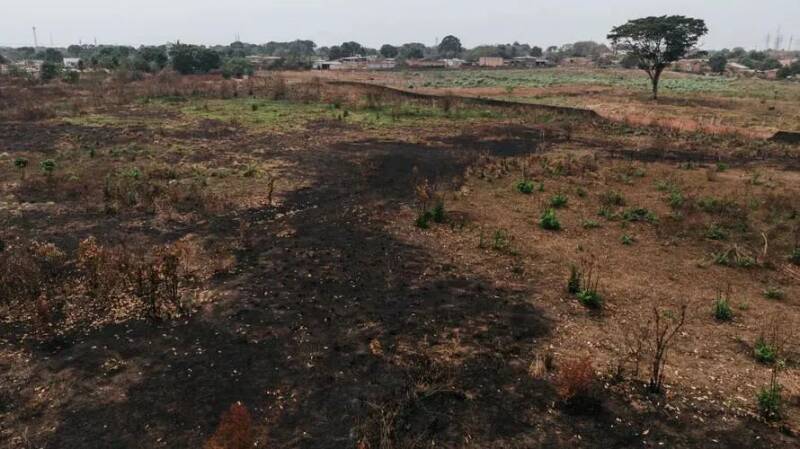Historical high! NYSE coffee beans quoted today at 279.3
At the close of trading today, the price benchmark of the coffee bean industry, the US Type C coffee futures, soared again, reaching a peak of 284.93 cents / lb, and finally breaking the record high of 279.35 cents / lb.
At the end of September, the price of type C coffee futures in the United States reached 273.4 cents per pound, breaking the record and setting the highest price in nearly a decade. It is reported that the price rise at that time was mainly due to severe drought and forest fires in many South American coffee producing countries, especially Brazil and Colombia, the world's leading coffee producing countries, which caused market concerns about coffee production and pushed up coffee futures prices.
However, when the European Commission announced in October that it planned to delay the implementation of the non-deforestation law EUDR by a year until 2025, the news slowed the earlier large purchases of coffee beans by European buyers, resulting in varying degrees of decline in Arabica and Robusta coffee prices.
According to the latest media reports, the European Parliament voted on November 14 to delay the implementation of the No deforestation Law (EUDR) for 12 months and passed a series of amendments to weaken the law. Although EUDR has been postponed for one year, many international coffee traders believe that the delay in EUDR will not offset the tension in global coffee supply, and the market still needs to pay attention to supply and demand.
Recently, Brazil has ushered in the rainy season after a severe drought. although the rainy season has slowed the threat of drought, many coffee institutions say that current rainfall can help restore moisture in the soil with severe water shortage. reduce the pressure on the root system of coffee trees, although it is helpful to coffee production to a certain extent, it can not make up for the damage caused by drought and fire to some coffee trees, and the yield may be reduced by 20% to 30% in some serious areas. Overall output fell by 6.8%.

Moreover, Brazil's meteorological department recently predicted that major coffee producing areas in Brazil may once again enter a dry, rain-free climate in the next few days, further affecting market concerns about Brazil's future coffee production.
In addition, the annual hurricane season in the Americas is from June to November, and the National Oceanic and Atmospheric Administration (NOAA) estimates that the "extraordinary" change in hurricanes in 2024 is 85 per cent more likely than normal. As a matter of fact, this year's hurricane season affects not only North America, but also Central and South America.
It is reported that coffee-producing countries such as Colombia, Costa Rica, Honduras and Panama have been affected by hurricanes, with heavy rainfall, floods and landslides, affecting the development of the coffee industry and supply chain and further pushing up prices.
In addition, the recent US election has also affected futures price fluctuations, during the election, the dollar has a rising trend, when Trump declared victory, the dollar index began to rise wildly. On the evening of Nov. 14, the dollar index reached a record high of 107.06. Coffee is a commodity denominated in dollars, and when the dollar strengthens, the cost of importing coffee denominated in other currencies increases, and importers need to pay more money to buy the same amount of coffee, which will lead to a rise in coffee prices.

On the other hand, geopolitics and the Red Sea crisis have also pushed up the price of coffee since November last year, all because of the heavy reliance on maritime shipping for coffee transport. The Red Sea crisis has led to higher transport costs and longer transport time on many routes, and prices in many African countries have also risen as a result of the Red Sea crisis, which has also pushed up the price of coffee.
In recent days, container shipping prices have risen, mainly due to congestion and strikes in some ports on European and American routes. And near the Christmas season, there is a wave of foreign trade orders, resulting in a shortage of containers, which also makes coffee transport prices rise, pushing up coffee prices.
Combined with these conditions and news, continue to push up the price of coffee futures, the European Union has passed the EUDR to delay the implementation of one year, but based on other aspects of the impact, coffee futures prices may not be high in the short term.
For more information about coffee producing areas, please scan the code directly and follow: coffee comments.
Long press the QR code to follow:
TRANSLATE with
XEnglishArabicHebrewPolishBulgarianHindiPortugueseCatalanHmong DawRomanianChinese SimplifiedHungarianRussianChinese TraditionalIndonesianSlovakCzechItalianSlovenianDanishJapaneseSpanishDutchKlingonSwedishEnglishKoreanThaiEstonianLatvianTurkishFinnishLithuanianUkrainianFrenchMalayUrduGermanMalteseVietnameseGreekNorwegianWelshHaitian CreolePersian
TRANSLATE with
COPY THE URL BELOW
BackEMBED THE SNIPPET BELOW IN YOUR SITE Bing Webmaster PortalBack
Important Notice :
前街咖啡 FrontStreet Coffee has moved to new addredd:
FrontStreet Coffee Address: 315,Donghua East Road,GuangZhou
Tel:020 38364473
- Prev

Stores are closed! Kudi is suspected of withdrawing from the Korean market?!
▲ Click to pay attention| Daily Boutique Coffee Culture Magazine Coffee Factory Recently, a post on social platforms titled "China coffee shops closed down in South Korea..." attracted the attention and discussion of netizens. The poster in South Korea said that when he passed by Kudi's store in Seoul's New Village recently, he found a cafe that was supposed to be brightly lit.
- Next

Introduction to Hope Estate in Cauca Valley Province, Colombia: What are the characteristics of Hope Estate Rose Summer Coffee?
Recently, Qianjie bought a sun-cured rose summer coffee bean from Hope Estate in Colombia. After brewing, it will have the aroma of blueberry and dark plum, and will have the flavors of blackcurrant juice, orange and berry after entering the mouth. The juice is full and has a red wine finish. This rose summer coffee bean is from a plant in Colombia that has a long history of cultivation
Related
- Being chased out of the rain in front of Starbucks?! Store: Sheltering from rain under umbrellas poses a safety hazard
- The white moonlight has changed?! Lucky launches "Big Winter Pear American"
- Hand-brewed coffee three-stage method, high-sweet and universal brewing method to share! What does the high sweet water level of hand-brewed coffee mean?
- What is the difference between raw, refined and full espresso coffee? How to extract espresso and taste good?
- A complete list of coffee bean names and their meanings! What is Yejia Shefi coffee? Where is Mantelin coffee?
- What grade does Arida Manor Kaduai coffee beans belong to? What treatment is Arida ASD slow anaerobic sun exposure?
- The milk tea cup becomes smaller?! Overlord Tea Girl launches a new "Return to Yunnan" series
- Accused of selling counterfeit and high-priced coffee beans! Well-known boutique coffee brand "Oukelao" bowed and apologized!
- How to make espresso dumplings? Can I eat coffee and glutinous rice balls together?
- Save the unformed and stagnant powder cakes in one second! What is the problem with stagnant water in the powder bowl of the espresso machine?

